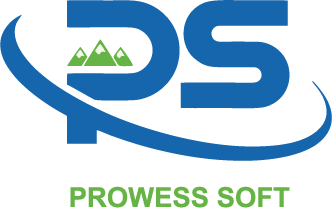Blog
The Overlooked Side of Project Management Track Revenue Cost & Margins
- October 16, 2025
- KVRK Prasad
The Overlooked Side of Project Management
The Overlooked Side of Project Management
Tracking Revenue, Cost & Margins
Project management isn’t just about meeting deadlines, attending scrum calls, or preventing scope creep. The real game-changer? Understanding your project’s financials. Tracking revenue, cost, and margins helps project managers make smarter decisions, optimize resources, and improve profitability.
1. Introduction
Effective project management goes far beyond handling scope creep, attending scrum calls, or tracking task completion. While these operational aspects are crucial, a project manager’s actual impact lies in understanding and influencing the financial health of the project. This includes managing resource revenue, cost, and profit margins.
2. Why It Matters
Many PMs don’t actively track or understand project financials. However, those who do gain a strong edge in:
- Making business-aligned decisions
- Gaining stakeholder trust
- Justifying or resisting change requests with data
- Optimising resource mix for maximum profitability
3. What to Track
To build financial visibility into your project, here are the key elements every PM should track:
1. Resource-Level Revenue
- Understand billing models (T&M vs Fixed Bid)
- Know the billing rate per resource/month
- Track planned vs actual billing based on timesheets or loading
2. Resource-Level Cost
- Capture internal cost per resource (fully loaded cost)
- Include vendor billing for contractors
- Consider hidden costs like bench time or ramp-up periods
3. Margin
- Margin = Revenue – Cost
- Track margin at the project and resource level
- Compare forecasted vs actual margin month over month
4. Variance Analysis
- Planned vs actual effort
- Forecasted vs actual revenue and cost
- Identify high variance contributors and root causes
4. How to Track It – Practical Ways
a. Excel-Based Tracking
Build a monthly tracker with:
- Columns for resource name, billing rate, internal cost
- Monthly loading % or hours
- Revenue = Billing rate x Loading
- Cost = Cost rate x Loading
- Margin = Revenue – Cost
b. Leverage PM Tools
- Use tools like Jira, MS Project, or Smartsheet with custom fields
- Integrate with finance systems or use APIs for real-time data
c. Variance Dashboards
- Set up dashboards using Power BI or Excel Pivot Tables
- Automate data pulls from timesheets and forecast sheets
d. Weekly/Monthly Reviews
- Review forecast vs actuals regularly
- Discuss trends with leads, finance, and delivery heads
5. What This Enables
- Data-backed decision making
- Smarter CR approvals and cost recovery
- Early risk flagging (e.g., low utilisation, margin drops)
- Stronger leadership visibility
- Better client conversation
6. The Hidden Risks of Not Tracking Financials
Many projects fail not due to delivery issues, but financial blind spots.
Include:
- Budget overruns caused by resource misallocation
- Unnoticed margin erosion due to high bench costs
- Poor forecasting leading to missed revenue recognition
- Leadership frustration due to lack of visibility
Impact: Adds urgency and business relevance — perfect for senior readers and LinkedIn shares.
7. Linking Financial Metrics to Delivery KPIs
Connect your financial data with delivery metrics to build a complete success picture.
Include:
- How schedule variance ties to cost variance
- Utilisation vs profitability correlation
- Delivery efficiency metrics (planned vs earned value)
- Example: “A project delivering on time but at 5% negative margin isn’t truly successful.”
Impact: Positions PMs as business-minded leaders who connect operations with strategy.
8. Real-World Example: Turning Financial Insights into Action
Add a short case-style section with anonymised data.
Include:
- A project running at 60% margin forecast → dropped to 45% actual
- Root cause: overuse of high-cost resources & missed billing
- Action taken adjusted staffing mix → margin recovered to 55%
Impact: Real, relatable storytelling — improves reader retention and SEO performance.
9. The Role of AI & Automation in Project Financial Tracking
Show how modern PMOs and tools are evolving.
Include:
- Use of AI in variance prediction (forecasting overspend)
- Automated dashboards for real-time visibility
- API-based integrations between Jira, Power BI, and finance tools
- Future trend: Predictive profitability tracking
Impact: Future-forward insight = higher authority and search visibility.
10. KPIs Every Project Manager Should Monitor
Strengthen with a bullet or table section.
Example Table:
Metric | Why It Matters | Ideal Tracking Frequency |
Revenue per FTE | Identifies high/low earning resources | Monthly |
Project Margin % | Measures overall profitability | Monthly |
Cost Variance | Tracks budget control | Weekly |
Utilisation % | Highlights resourcing efficiency | Weekly |
Forecast Accuracy | Measures planning effectiveness | Monthly |
Impact: Adds scannable, data-driven value — great for SEO and user experience.
11. Metrics Dashboard Example (Visual or Table)
If you plan to design visuals, add a sample dashboard layout suggestion:
- Pie chart: Cost vs Revenue breakdown
- Line graph: Monthly margin trend
- Heatmap: Resource utilisation vs profitability
Impact: Visual content improves time-on-page and snippet chances.
12. Final Takeaway: The Strategic PM Mindset
End with a motivational paragraph that reframes project management.
Example Text:
The next-generation project manager isn’t just managing deliverables — they’re managing financial outcomes.
By combining visibility, data, and business thinking, PMs can move from reporting progress to driving profit.
Impact: Perfect closing that reinforces leadership tone.
Conclusion
Project managers are more than taskmasters—they are strategic business enablers. By actively tracking resource-level revenue, cost, and margins, you gain:
- Better control over project profitability
- Data-driven decision-making capabilities
- Enhanced stakeholder trust and leadership visibility
Tracking financials isn’t just a task; it’s a mindset shift that transforms how you lead projects. Start today and turn financial insights into actionable strategies that boost both project success and your professional impact.

Editor: KVRK Prasad
Frequently Asked Questions:
It helps PMs make data-driven decisions, optimise resources, improve profitability, and gain stakeholder trust.
Revenue at the resource level is the amount generated by each team member based on their billing rate and time allocated to the project.
- Resource-level cost includes internal salaries, fully loaded costs, vendor fees, and hidden costs like bench time or ramp-up periods.
Margin = Revenue – Cost. Track at both resource and project levels and compare forecasted vs actual margins monthly.
Variance analysis compares planned vs actual effort, revenue, and costs, helping identify high-variance contributors and root causes.
Use Excel trackers, Jira, MS Project, Smartsheet, or dashboards in Power BI, preferably integrated with finance systems for real-time insights.
- Conduct weekly or monthly reviews to track forecast vs actuals and address potential issues early.
Yes. With data-backed insights, you can confidently justify or reject change requests, protecting project margins.
Clients appreciate transparency. Sharing revenue, cost, and margin insights builds trust and demonstrates project control.
The primary benefit is transforming your role from executor to strategist, enabling better decisions, stronger leadership visibility, and improved project profitability.
